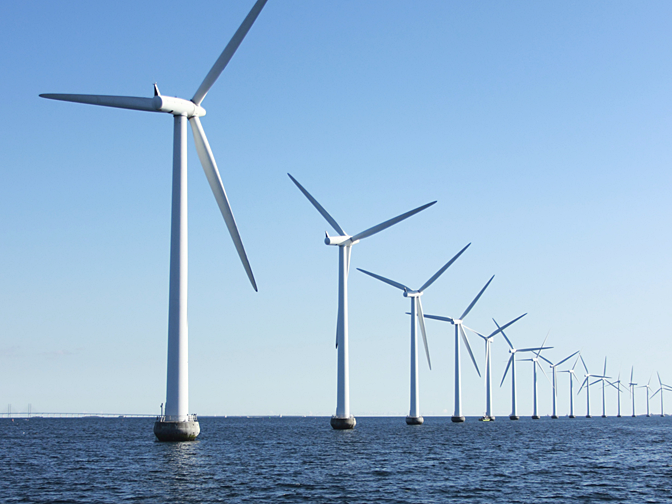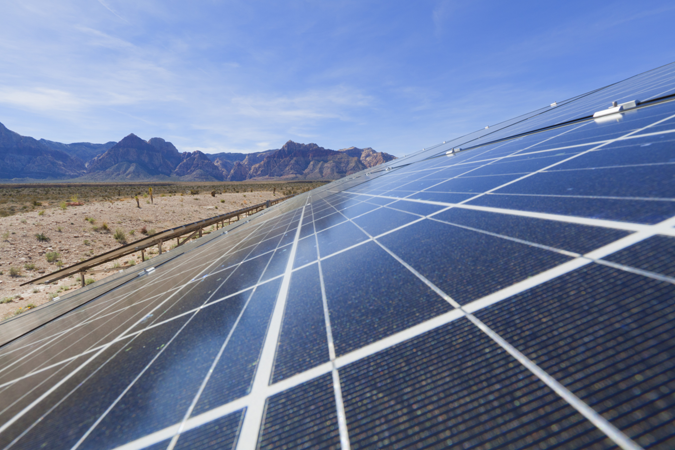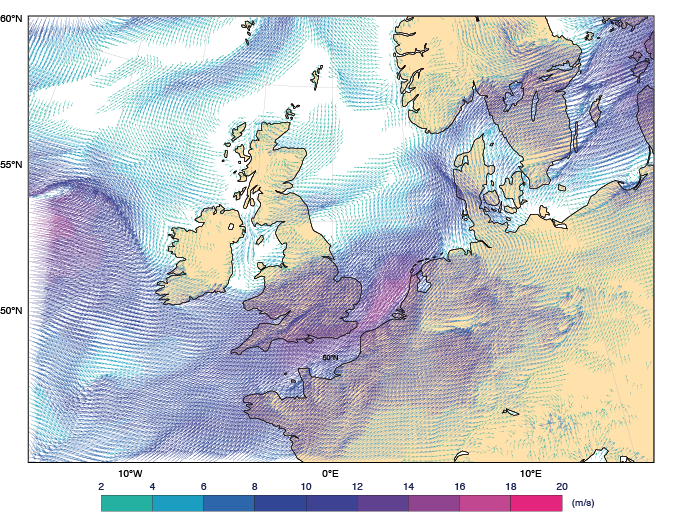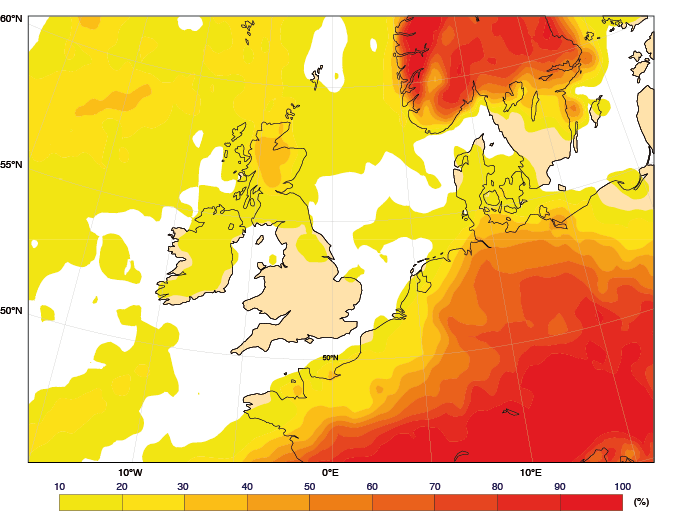

The role of meteorology in the energy sector was the subject of an international conference in Boulder, Colorado, in June. David Richardson, who attended the event for ECMWF, explains why the growth in renewable energy is boosting demand for weather prediction across all timescales.
Weather forecasts have long been important to the energy sector. Traditionally they have been used to anticipate demand. Hot or cold weather can lead to significant spikes in consumption caused by increased air conditioning and heating. Advance knowledge of the weather helps energy companies to predict such surges and to make sure they have adequate supplies.
As the share of solar and wind power in the energy mix grows, forecasting supply as well as demand is becoming increasingly important. The reason is that the power output from these sources of energy is highly variable. To a large extent, this variability depends on the weather.
Impact of weather conditions
Consider the example of wind: the electricity generated by a wind turbine may vary significantly from one hour, day, week or month to the next, depending on the direction and strength of the wind. Over longer timescales, climate variability and climate change may affect the amount of wind power available at particular sites.
Different aspects of wind information are important to different players in the energy sector:
- Policy makers need to be able to weigh the potential of wind power as part of the overall energy mix.
- Wind farm operators considering siting options need to know how much power could be produced in particular locations, and how variable that power would be.
- Grid operators need to be able to estimate how much power will be generated from wind in the hours to come so they can balance the network.
- Energy traders need to have an idea of the amount of power they will be able to trade on electricity markets on a given day.
- Wind turbine operators need to know when winds are forecast to be low to plan routine maintenance.

Solar array in the Mojave Desert, California. (Photo: Thinkstock)
Similar considerations apply in the case of solar power. During the day, cloud cover is an important factor. As with wind, climate variability and climate change may have a bearing on longer-term patterns of solar radiation at the surface in particular locations.
Weather can also affect the power supply in a very different way: severe weather events, such as gales and freezing rain, can cause damage to transmission lines. Forecasts can help network operators to plan mitigating actions in good time.
‘Seamless prediction’
There is thus a demand in the energy sector for predictions ranging from weather forecasts for the next hour to monthly and seasonal predictions and climate projections many years ahead.
The World Meteorological Organization (WMO) has recognised the importance of this by adding energy to the list of priority areas to be addressed in its Global Framework for Climate Services (GFCS), set up in 2009. By taking into account weather and climate information, energy systems can “considerably improve their resilience” to weather extremes, climate variability and climate change, the WMO says.
The 3rd International Conference on Meteorology & Energy was held in Boulder, Colorado, from 22 to 26 June. It brought together around 200 experts from the energy industry and the weather and climate community to review how ‘seamless prediction’ capabilities across all timescales can help address the challenges faced by the energy sector.
ECMWF forecasts are used across the energy sector and were discussed in many of the presentations during the conference. Our forecasts are available as ensemble forecasts, which predict a set of possible outcomes and enable assessments of the probability of different weather scenarios.
At ECMWF, we have introduced specific products for wind and solar power producers, such as forecasts of wind speed at a height of 100 metres and of direct solar radiation at the surface.


ECMWF provides 100-metre wind information from its high-resolution forecast (top panel) and ensemble forecast (bottom panel). The length and colour of the arrows in the top panel indicate predicted wind speed, while the shading in the bottom panel shows the ensemble probability that the 100-metre wind speed will be below 5 m/s, highlighting regions where relatively little wind energy production can be expected at this time. Five-day ahead forecast from Wednesday 15 July 2015.
Our Extreme Forecast Index (EFI) is now widely used to alert forecasters to potential extreme weather events. And a model upgrade implemented in May introduced freezing rain as a new forecast parameter. Large build-ups of ice from freezing rain can bring down major power transmission lines, leaving wide areas without electricity.
Our longer-range forecasts of temperature for weeks ahead give an early indication of possible hot or cold periods, which are used in energy demand planning. Recent results presented at the conference demonstrated the potential to also use these longer-range predictions to forecast wind power production up to three weeks ahead.
ECMWF also produces seasonal forecasts and climate reanalyses. The latter combine information from past meteorological observations with modern forecast models to provide a comprehensive and coherent record of climate variables over extended periods of time.
David Richardson is the Head of ECMWF's Evaluation Section.
Top photo: Thinkstock
